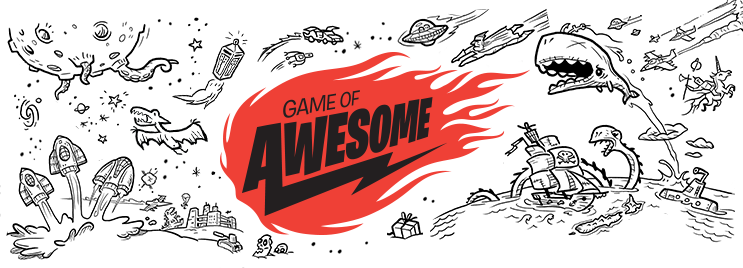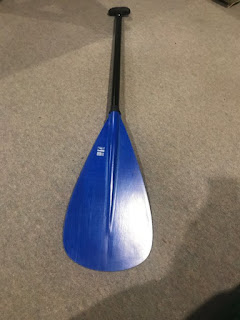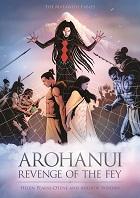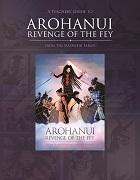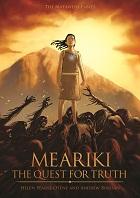Exploring the Revised Technology Learning Area
Exploring the Revised Technology Learning Area. From the beginning of the ideas, the word compulsory was used. This is no longer the case. I wish I had read and understood the words from the following document earlier in the process. It has been through reading this as well as a range of other documents that I am now starting to develop a better understanding and as well as develop better guidance.
So the main document I am reading and developing my understanding is from
http://nzcurriculum.tki.org.nz/The-New-Zealand-Curriculum/Technology this is the Revised Curriculum document for Technology.
We've revised the Technology learning area to strengthen the positioning of Digital Technologies in The New Zealand Curriculum. The goal of this change is to ensure that all learners have the opportunity to become digitally capable individuals. This change signals the need for greater focus on our students building their skills so they can be innovative creators of digital solutions, moving beyond solely being users and consumers of digital technologies.
Schools will be expected to fully integrate the revised learning area into their curriculum by the start of the 2020 school year.
Technology in the New Zealand Curriculum 2017 (PDF, 354 KB)
Technological areas
The technological areas provide contexts for learning. At primary school, teachers will generally take a cross-curricular approach, with students learning in the technological areas as part of a topic or theme that encompasses several curriculum learning areas. This approach can also be applied in years 9 and 10, before students begin to specialise in particular technological areas.
Digital technologies
The first two of the five technological areas focus on developing students’ capability to create digital technologies for specific purposes. In years 1–8, these two areas are usually implemented within other curriculum learning areas, integrating technology outcomes with the learning area outcomes. These two areas also significantly contribute to students developing the knowledge and skills they need as digital citizens and as users of digital technologies across the curriculum. They also provide opportunities to further develop their key competencies.
By the end of year 10, students’ digital technological knowledge and skills enable them to follow a predetermined process to design, develop, store, test and evaluate digital content to address a given issue. Throughout this process, students take into account immediate social and end-user considerations. They can independently decompose a computational problem into an algorithm that they use to create a program incorporating inputs, outputs, sequence, selection and iteration. They understand the role of systems in managing digital devices, security and application software, and they are able to apply file management conventions using a range of storage devices.
By the end of year 13, students who have specialised in digital technologies will design and develop fit-for-purpose digital outcomes, drawing on their knowledge of a range of digital applications and systems and taking into account a synthesis of social, ethical and end-user considerations. They understand how areas of computer science such as network communication protocols and artificial intelligence are underpinned by algorithms, data representation and programming, and they analyse how these are synthesised in real world applications. They use accepted software engineering methodologies to design, develop, document and test complex computer programs.
So, what is it that I have found, technology in general, this is not specific to digital technologies, but all the technology strands.
The technological areas provide contexts for learning. At primary school, teachers will generally take a cross-curricular approach, with students learning in the technological areas as part of a topic or theme that encompasses several curriculum learning areas. This approach can also be applied in years 9 and 10, before students begin to specialise in particular technological areas.
When reading this, the part I have to remember is...
At primary school, teachers will generally take a cross-curricular approach, with students learning in the technological areas as part of a topic or theme that encompasses several curriculum learning areas.
That encompasses several learning areas... Ok, I know what that means.
This approach can also be applied in years 9 and 10, before students begin to specialise in particular technological areas.
Specifically focussing on Digital technologies now...
In years 1–8, these two areas are usually implemented within other curriculum learning areas, integrating technology outcomes with the learning area outcomes.
Now back to the first section,
Schools will be expected to fully integrate the revised learning area into their curriculum by the start of the 2020 school year.
Fully integrate, what does this mean, and for me this thinking has been derived from Page 44 of the NZC 2007. Is it that schools should be integrating the revised Technology Learning Area into their schools effectively taught programme of Technology.
Now, what does it say in the other strands?
Learning pathways, Page 5
Over the course of years 1–10, students learn in all five technological areas, developing their knowledge and skills in context. By offering a variety of contexts, teachers help their students to recognise links between technological areas. Students should be encouraged to access relevant knowledge and skills from other learning areas and to build on their developing key competencies. Work towards progress outcomes in computational thinking for digital technologies and designing and developing digital outcomes should build each year in order to ensure learners achieve all of the significant learning steps.
This states the five technological learning areas,
- Computational thinking for digital technologies
- Designing and developing digital outcomes
- Designing and developing materials outcomes
- Designing and developing processed outcomes
- Design and visual communication.
How are school integrating the learning from these areas with their school curriculum?
Integration
While it could be integrated within other learning areas, as it would be in the primary school years, this is where schools need to be figuring out what they are planning on doing. If integration is being used within schools to combine learning areas into rich learning as they now are in the new modern learning environment schools where the pedagogy has changed and the removal of SILO's has been thought about and developed through comprehensive PLD. These are few and far between. There are existing schools that are using this change to explore curriculum review to be able to reshape what the curriculum looks like within the school.
While aspects of these two areas could be taught within other curriculum areas, it is through the technology-digital technologies specialist teacher that the strength of the specific curriculum knowledge and skill to allow the rich learning to take place to enable students by the end of year 10 the knowledge and skills to enable them to meet the suggested outcomes in the document.
While all teachers are teachers of literacy and numeracy, digital fluency, it is the specific subject knowledge and skills of the specialist teacher that provides opportunities for students to engage through authentic contexts and end users the rich learning.
Schools also need to consider the NZC 2007
Page 44 of the New Zealand Curriculum States
Each board of trustees, through the principal and staff, is required to develop and implement a curriculum for students in years 1–13:
- that is underpinned by and consistent with the principles
- in which the values are encouraged and modelled and are explored by students
- that supports students to develop the key competencies.
Each board of trustees, through the principal and staff, is required to provide all students in years 1–10 with effectively taught programmes of learning in:
When designing and reviewing their curriculum, schools select achievement objectives from each area in response to the identified interests and learning needs of their students.
For learning in digital technologies, schools need to provide learning opportunities in line with the progress outcomes from the technology learning area.
Models of Curriculum Integration
Models of Curriculum Integration in New Zealand Secondary Schools, Philip Jellyman, The conclusion is one of the best that I have found. However, I feel that he does miss a point, the catalyst for change should not only be about buildings, but schools looking at how they are offering the curriculum. It has now been 11 years since the NZC 2007 was implemented within schools.
Conclusion Implemented well, an integrated curriculum, aligned with modern teaching practices such as inquiry learning based on authentic contexts, has the potential to enhance student learning and competencies beyond what is generally possible in subject specific lessons. Schools considering introducing some form of integrated curriculum should be wary of the barriers identified above and take steps to address them in advance. The most successful schools operating integrated curricula tended to be those new schools that have been built over the past 10 years. The reason for their success is that they were able to integrate solutions to these barriers into their design. For example, a clear vision of what an integrated curriculum looks like was typically established as a part of the founding principles of the school with the timetable designed to facilitate this from the beginning. Staff were hired with a clear understanding what this vision was and the ramifications for their teaching and parents were inducted into the school’s vision without any baggage as to how things were done in the past. In addition, the advent of more open plan modern learning environments contributes to the opportunities to integrate the curricula by allowing multiple teachers to be operating in the same space with several classes.
This latter point may constitute an opportunity for established schools considering an integrated curriculum in that, as new school buildings are built along modern learning environment principles over the coming years, this could provide a catalyst for discussion and integrated curriculum development.
In terms of the best structure for an integrated curriculum, from my observations I would suggest that the structure is less important than the collective vision of what the school wants the students to gain from it. Staff and senior leadership need to be clear as to what a move to an integrated curriculum is designed to achieve for the students and the rationale behind it. If the staff are on board and supported with time and professional development, then any structure can be made to work well and similarly, if staff do not buy into the programme then which structure is followed will not matter either.
Curriculum integration in New Zealand secondary school, lessons learned from four early adapter schools looks at the following lessons learned, the ideas here are around school leadership taking an active role in the development of this. Currently, it feels through the feedback that the Revised Technology Learning Area is being given to the Digital Technology teacher to sort out, rather than taking a leading role in a whole curriculum integration approach.
Conclusion—lessons learned
In sum, a number of lessons can be learned from the experience of these early adopter schools:
- Schools and their leaders should not underestimate the importance of addressing teachers’ beliefs about curriculum integration, as well as allowing teachers time to confront the necessity for change.
- Slow, considered change leads to more effective and successful curriculum integration.
- Timely and relevant professional learning is vital to allow teachers to gain firm theoretical understandings in order to support curriculum integration.
- Individual teachers interested in embracing curriculum integration should ensure that they are adequately supported by senior and middle leaders, as well as colleagues and caregivers. The decision to employ curriculum integration should be grounded in a real need, which is student-driven.
- Resources are needed to equip school leadership, and provide a greater research base to support schools to develop sophisticated approaches to curriculum integration (Dowden, 2012).
Models of Curriculum Integration in New Zealand Secondary Schools Sabbatical report, Term 2, 2015, Philip Jellyman, St Dominic’s Catholic College
http://www.educationalleaders.govt.nz/content/download/73195/601556/file/Philip%20Jellyman%20Sabbatical%20Report%202015%20-%20Models%20of%20Curriculum%20Integration.pdf
Intergration models in New Zealand, Radio NZ, 2018
https://www.radionz.co.nz/national/programmes/insight/audio/2018670501/learning-revolution-or-pathway-to-ignorance
Student inquiry and curriculum integration, Shared origins and points of difference (Part A), Sally Boyd and Rose Hipkins, 2012,
https://www.nzcer.org.nz/system/files/set2012_3_015.pdf
Curriculum integration in New Zealand secondary schools, Lessons learned from four “early adopter” schools, Susan Arrowsmith and Bronwyn E. Wood, 2015,
https://www.nzcer.org.nz/system/files/set2015_1_058.pdf
